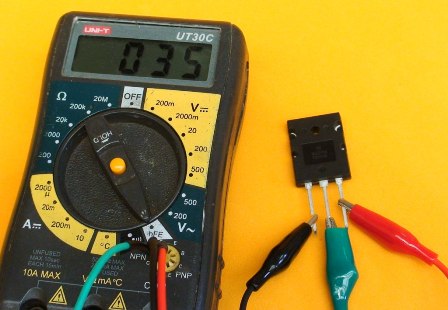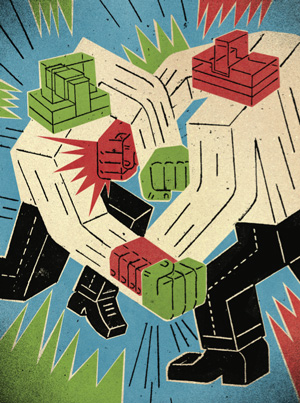Categories: Featured Articles » Practical Electronics
Number of views: 50318
Comments on the article: 0
Bipolar and field effect transistors - what is the difference
Current or field
Most people, one way or another confronted with electronics, the basic device of field-effect and bipolar transistors should be known. At least from the name “field effect transistor”, it is obvious that it is controlled by the field, the electric field of the shutter, while bipolar transistor controlled by base current.
Current and field - the difference is cardinal. For bipolar transistors, the collector current is controlled by changing the control current of the base, while to control the drain current of the field effect transistor, it is enough to change the voltage applied between the gate and the source, and no control current is needed anymore.

FETs faster
What kind transistors better field or bipolar? The advantage of field-effect transistors, in comparison with bipolar ones, is obvious: field-effect transistors have a high input resistance in direct current, and even control at a high frequency does not lead to significant energy costs.
The accumulation and resorption of minority charge carriers is absent in field-effect transistors, which is why their speed is very high (as noted by the developers of power equipment). And since the transfer of the main charge carriers is responsible for the amplification in field-effect transistors, the upper limit of the effective amplification of field-effect transistors is higher than that of bipolar ones.
Here we also note high temperature stability, a low level of interference (due to the lack of injection of minority charge carriers, as happens in bipolar carriers), and economy in terms of energy consumption.
Different reaction to heat
If the bipolar transistor heats up during operation of the device, then the collector-emitter current increases, that is, the temperature coefficient of resistance of the bipolar transistors is negative.
In the field, the opposite is true - the temperature coefficient of drain-source is positive, that is, with increasing temperature, the channel resistance also increases, that is, the drain-source current decreases. This circumstance gives the field-effect transistor one more advantage over bipolar ones: field-effect transistors can be safely connected in parallel, and leveling resistors in the circuits of their drains will not be required, since in accordance with the increase in load, the channel resistance will also automatically increase.
So to achieve high switching currents, you can easily dial a composite key from several parallel field-effect transistors, which is used a lot in practice, for example in inverters (see - Why modern inverters use transistors rather than thyristors).
But bipolar transistors can’t just be parallelized, they need necessarily current-leveling resistors in the circuits of the emitters. Otherwise, due to an imbalance in a powerful composite key, one of the bipolar transistors will sooner or later have an irreversible thermal breakdown. The named composite problem is almost not threatened by field composite keys. These characteristic thermal features are associated with the properties of a simple n- and p-channel and p-n junctionthat are fundamentally different.

Scopes of those and other transistors
The differences between field-effect and bipolar transistors clearly separate their field of application. For example, in digital circuits, where the minimum current consumption in standby state is required, field-effect transistors are used much more widely today. In analog microcircuits, field-effect transistors help to achieve high linearity of the gain characteristics in a wide range of supply voltages and output parameters.
Reel-to-reel circuits are conveniently implemented today with field-effect transistors, because the voltage range of the outputs as signals for the inputs is easily achieved, almost coinciding with the level of the supply voltage. Such circuits can simply connect the output of one with the input of the other, and no voltage limiters or dividers on the resistors are needed.
As for bipolar transistors, their typical applications remain: amplifiers, their stages, modulators, detectors, logic inverters, and transistor logic circuits.
Field win
Outstanding examples of devices based on field effect transistors are electronic watches and remote control for tv. Due to the use of CMOS structures, these devices can operate up to several years from one miniature power source - a battery or accumulator, because they practically do not consume energy.
Currently, field effect transistors are increasingly used in various radio devices, where they are already successfully replacing bipolar ones. Their use in radio transmitting devices allows to increase the frequency of the carrier signal, providing such devices with high noise immunity.
Possessing low resistance in the open state, they are used in the final stages of high-power audio frequency amplifiers (Hi-Fi), where bipolar transistors and even electronic tubes are also successfully replaced.
In high power devices, such as soft starters, Insulated Gate Bipolar Transistors (IGBT) - devices that combine both bipolar and field effect transistors are already successfully displacing thyristors.
See also: Types of transistors and their features
See also at bgv.electricianexp.com
:
